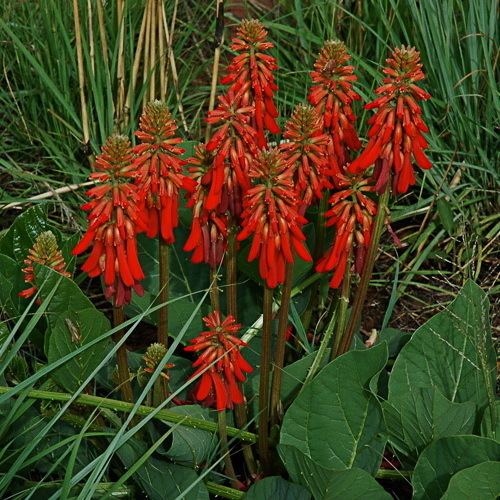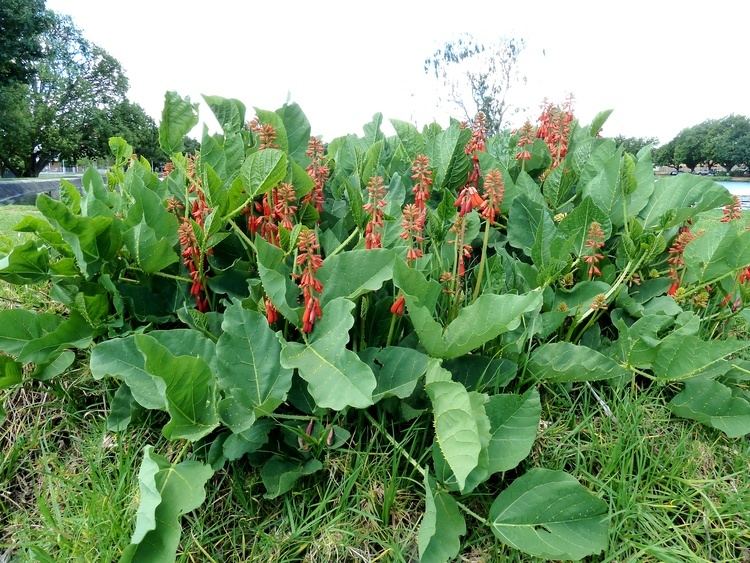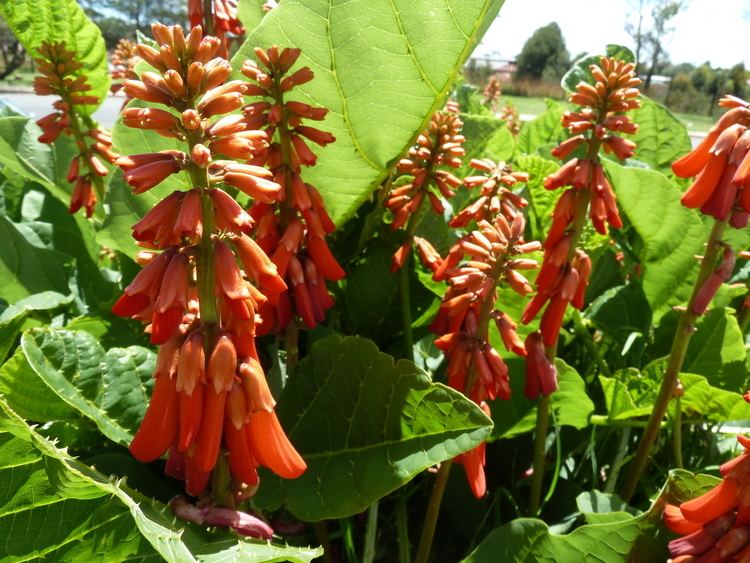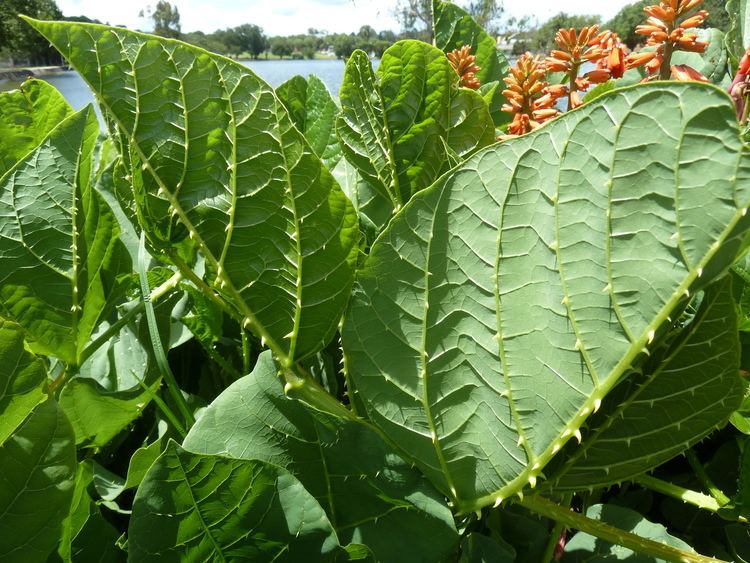Rank Species | ||
 | ||
Similar Erythrina humeana, Erythrina acanthocarpa, Erythrina latissima, Erythrina haerdii, Erythrina madagascariensis | ||
Erythrina zeyheri, commonly known as the ploughbreaker, is a deciduous, geoxylic subshrub and member of the Fabaceae, which is endemic to southern Africa. It grows no more than 60 cm tall and occurs naturally in the higher altitude grasslands of South Africa's central plateau, and that of adjacent Lesotho. They favour clay soil in the vicinity of creeks and marshes and often form colonies. Its specific name commemorates the 19th century botanist, Karl Zeyher.
Contents
Description

The glabrous, trifoliolate leaves have large leaflets armed with recurved spines along the rachis and main venation, which is prominently raised below. The shoots and leaves are deciduous, dying away during harsh highveld winters, when the plant survives as an extensive tuberous rootstock. Inflorescences appear in summer, from October to January. The drooping scarlet, or rarely white flowers are capped by a red calyxes.
Their fruit are smooth black pods, each containing a few hard, orange-red seeds.
It is a geoxylic plant, sometimes called an "underground tree".
Foodplant
It is a foodplant for the moth Terastia margaritis.


